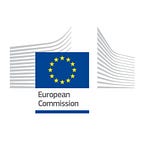What did COP28 achieve?
Delegates from some 200 countries made their way to the flashy Expo 2020 venue on the edge of the sprawling city of Dubai for a fortnight of COP28 climate change negotiations. 14 days later, once the gavel fell and the delegates headed home, what was achieved at COP28 in the United Arab Emirates, and how did the EU team push for more international climate action?
Best foot forward on Loss and Damage
This year’s COP started on a positive footing from day one, with the agreement to set up a Loss and Damage Fund to support those countries most affected by negative impacts of climate change. This agreement already delivered on one of the EU’s main negotiation goals. By the end of the two weeks countries had pledged over $700 million to the Fund, with well over half of the total coming from the EU and its Member States.
Global Stocktake
The centrepiece of this year’s COP was the Global Stocktake — a progress report or “score card” on global climate action and a forward guidance for countries on what they need to do to correct the course and deliver on their Paris commitments. The conclusion? Unsurprisingly, the world is not currently on track to reduce emissions sufficiently to limit the global temperature rise to 1.5°C.
Parties agreed on the need to get back on track by reiterating their determination to stay within the 1.5°C threshold. They also committed to preparing their updated climate action plans, or Nationally Determined Contributions (NDCs), for after 2030 before COP30, which will take place in two years’ time in Brazil. These should follow science and be aligned with the outcomes of the Global Stocktake.
(Phase) down and out in Dubai
Much of the talk in the final days of COP centred on finding consensus about the fate of fossil fuels.
To make this possible, coal, gas and oil must be rapidly replaced by renewable energy sources. With this goal in mind, President von der Leyen spearheaded a global initiative to triple renewable energy capacity and double energy efficiency measures by 2030, to which all Parties committed in the final consensus reached at COP28. The President also announced that the EU would invest €2.3 billion from the EU budget to support the energy transition in the European neighbourhood and around the globe.
Ultimately, the final agreement calls on the countries to take action with a view to “transitioning away from fossil fuels in energy systems”. After thirty years of hard work, this global consensus marks a turning point and sends a critical signal to the fossil fuel industry. While the wording doesn’t match the EU’s ambition, this does show marked progress from a position only two years ago when the idea of countries agreeing to this language was unthinkable. Our job now is to deliver on this transition and bring our partners with us.
Adaptation in the spotlight
COP28 was also expected to advance on the Global Goal for Adaptation — a collective commitment under the Paris Agreement aimed at “enhancing [the world’s] adaptive capacity, strengthening resilience and reducing vulnerability to climate change.”
After two years of technical workshops, negotiators in Dubai established a framework on the Global Goal to protect the most vulnerable communities from increasingly extreme and frequent weather events and record-high temperatures.
EU pledges and key events
Aside from the formal decisions mentioned in the final Conference text, the EU also launched a number of initiatives over the two weeks. Here are some of the highlights:
- President von der Leyen announced €175 million of financial support from the EU and its Member States to reduce methane emissions.
- Executive Vice-President Maroš Šefčovič announced the first two European projects to be supported by the EU–Catalyst partnership and participated in the 1st Ministerial Meeting on Climate and Health and the EU joined the signatories of the related Declaration.
- The EU announced a €20 billion Team Europe Africa-EU Green Energy Initiative and launched a Team Europe Initiative on Deforestation-Free Value Chains.
- The Commission committed to pledge €1 million to the recent Blue Mediterranean Partnership.
Last but not least, the Commission hosted almost 100 side events at the EU Pavilion in Dubai and online. The topics, all related to climate change and climate action, ranged from nature restoration to energy security to sustainable finance.
EU Commissioners actively participated in many of the events, and interacted with with the audience. For example, EU Commissioner for Climate Action Wopke Hoekstra met youth representatives from around the world and President von der Leyen hosted a high-level event on carbon markets with the IMF, WTO and World Bank, while EU Commissioner for Energy Kadri Simson was present for two EU Energy Days and Commissioner Sinkevičius.
What is the EU doing?
With the adoption of the Fit for 55 legislation this year, the EU is on track to achieve to achieve its legally binding commitments to reach climate neutrality (net-zero emissions) by 2050 and will exceed the 2030 target of cutting net greenhouse gas emissions by at least -55%, if all legislation is implemented as agreed.
The EU will be in a position to update its NDC (the climate action plan we submit to the United Nations) to reflect a higher target of around 57% reductions in net emissions of greenhouse gases.
But with the EU responsible for only 6% of global emissions, and falling, it’s paramount for others to act too. The EU is calling on all major emitters to follow through on their promises, go further, and deliver the highest possible level of ambition to lock in the goal of limiting temperature rise to 1.5°C.
All 196 countries that are Parties to the Paris Agreement, will meet again next year to check progress and agree on the next steps at COP29, which will be hosted by Azerbaijan.
